Yesterday it was announced that this year’s Nobel Peace Prize goes to “Nihon Hidankyo”. That’s a Japanese confederation of A-Bomb survivors (‘Hibakusha’ in Japanese) that has long been campaigning for the complete abolition of nuclear weapons. This choice by the Nobel Committee was surely inspired at least in part by the repeated nuclear threats made by Vladimir Putin since his war of aggression against Ukraine started.
I’m now taking this Nobel Peace Prize choice as inspiration for a Blog Post about Hiroshima and Nagasaki, the two cities nuked by the USA towards the end of WWII, i.e. the very places that the ‘Hibakusha’ somehow survived. The topic is also a fitting follow-up to the previous post about nuclear testing. I’ll keep the text to an essential minimum (follow the links to get more info) and let this primarily be another photo essay.
First off, here’s a photo of THE most iconic sight related to the bombing of Hiroshima, the so-called “A-Bomb Dome”, seen here with peaceful-looking cherry blossoms in the foreground. The photo was taken in April 2009:
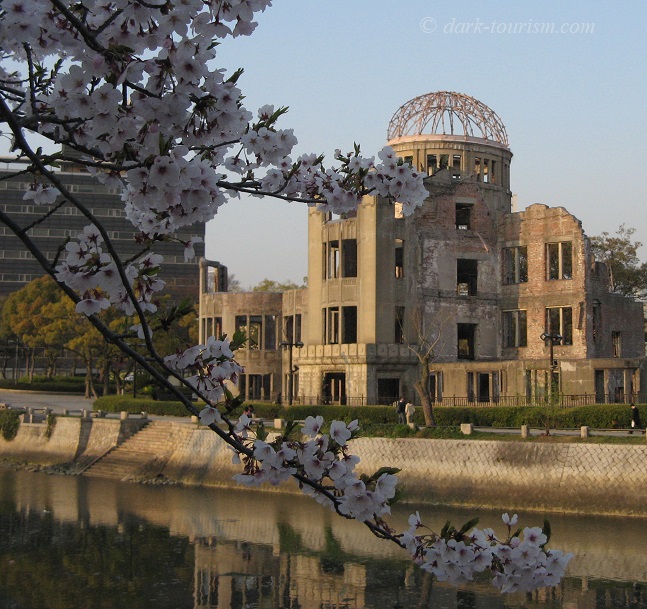
I found that the iconic structure of the A-Bomb Dome generally invited creative photography. Here’s another example, taken at sunset, with the sun behind the building atmospherically and suggestively shining through one of the windows (same photo as the featured one at the top of this post):

And here’s one more, taken after dark on my return visit to Japan in 2019, with a full reflection of the landmark in the river:
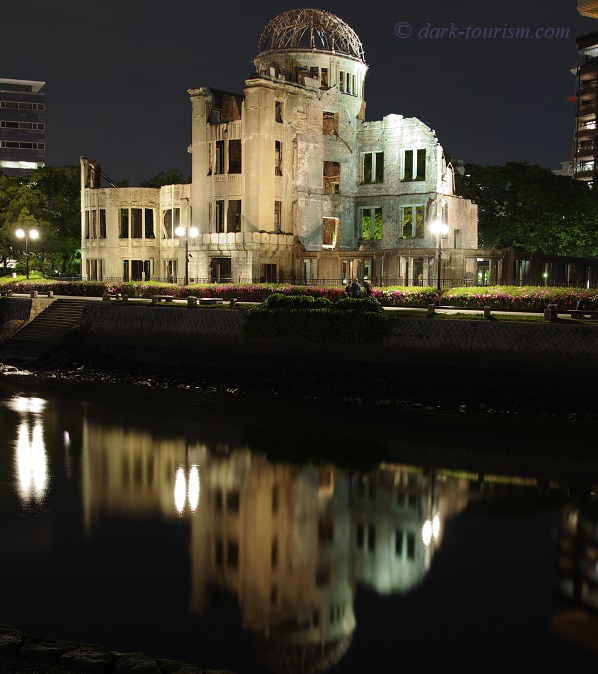
I now think this photo should have featured in the Blog Post “DT & Reflections” but at the time I just didn’t think of it …
Across the river from the A-Bomb Dome is the Hiroshima Peace Memorial Park, which features numerous memorial monuments. Here is the main one, the Cenotaph (with the A-Bomb Dome in the background):
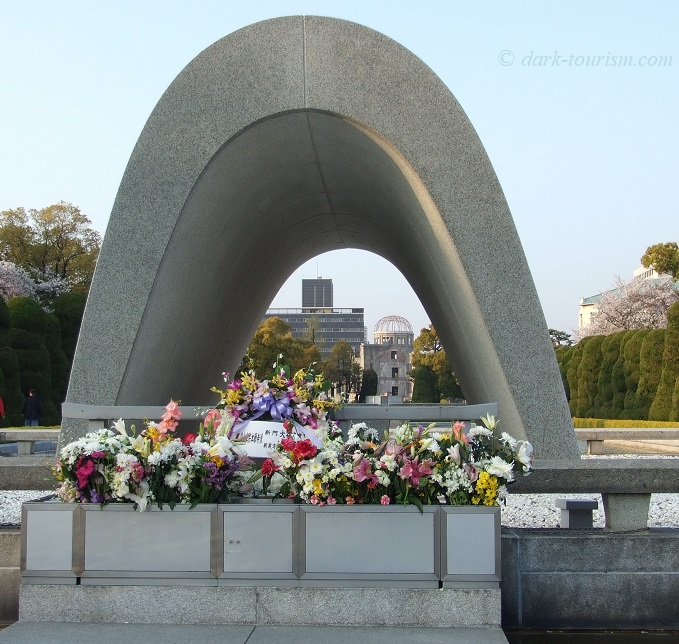
Also located in the Park is the Hiroshima Peace Memorial Museum, which has plenty of remarkable displays. Here’s one – a charred watch stopped at the exact time of the detonation of the Hiroshima bomb (“Little Boy”) on 6 August 1945, later found in the rubble:
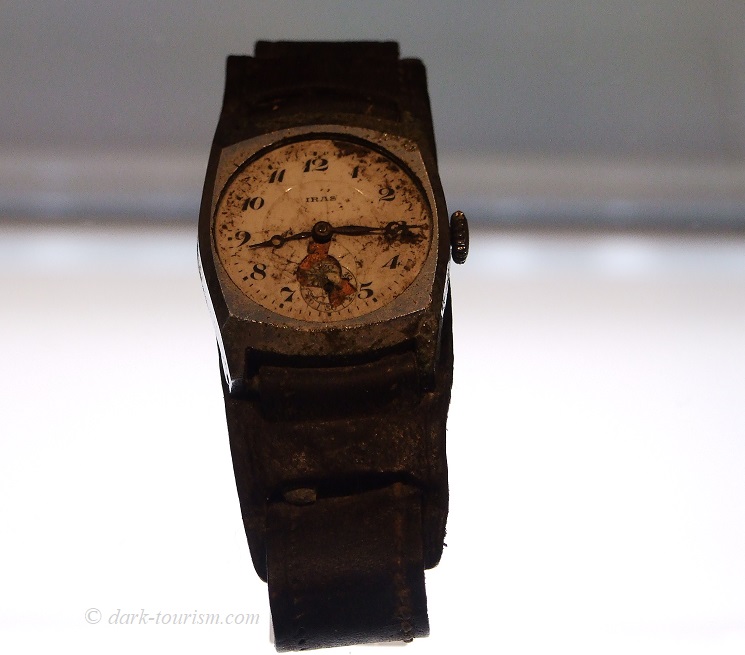
When I was there for a revisit in 2019, the museum had just reopened after a substantial refurbishment. Amongst the many new things it now featured an overlay projection as a simulation of the blast and the fireball over the city:

A particularly infamous artefact on display in the museum is a fragment of a bank building that stood near the hypocentre. This is where a man had been sitting on the steps waiting for the bank to open when he was vaporized by the heat of the blast – and that left a “shadow” of him on the steps and wall:

Another remarkable exhibit is part of a wall showing streaks of “black rain” (the precipitation from the mushroom cloud, full of radioactive soot), which some of the hapless and terribly thirsty survivors drank in their desperation, thus making their internal contamination much, much worse:
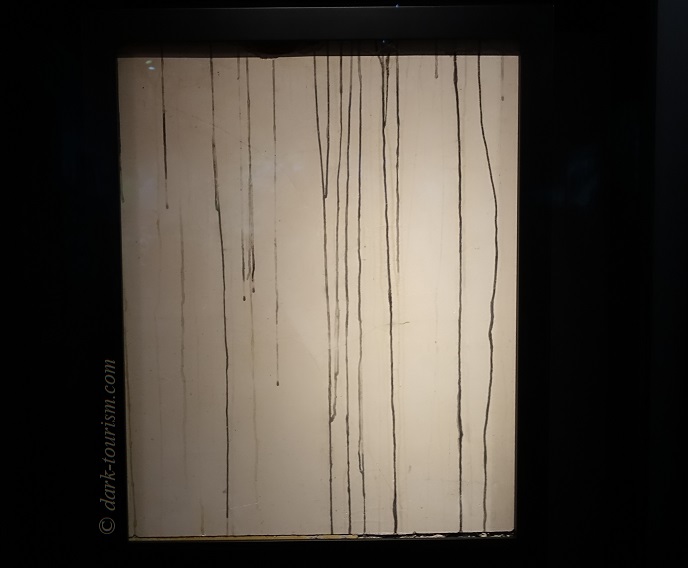
Amongst the many objects on display in the museum is also this schoolboy’s lunchbox with its contents charred to black coal:

One exhibit that did not survive the refurbishment and that I thus no longer found in 2019, is this gory recreation of a scene of dummy survivors with flesh hanging off their burnt arms. Apparently this exhibit was deemed too graphic and was removed. The photo of this exhibit was taken on my first visit to Hiroshima in 2009:
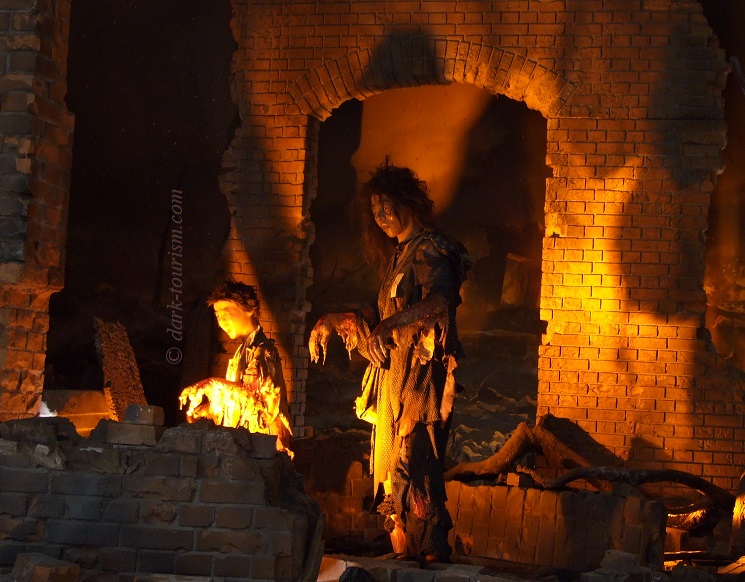
Apart from the A-Bomb Dome and the Peace Memorial Park and Museum, there are also various other sites in the city related to the atomic bombing, such as Honkawa Elementary School. In its basement is a large diorama of Hiroshima at the time of the bombing – the red ball suspended above it signifies the spot where the bomb went off (ca. 600m above the hypocentre):

While this school was fairly close to the hypocentre, another A-Bomb-related sight in Hiroshima was nearly two miles away from the hypocentre – the former Army Clothing Depot, whose windows have steel shutters which are still bent inwards from the force of the shock wave created by the blast:
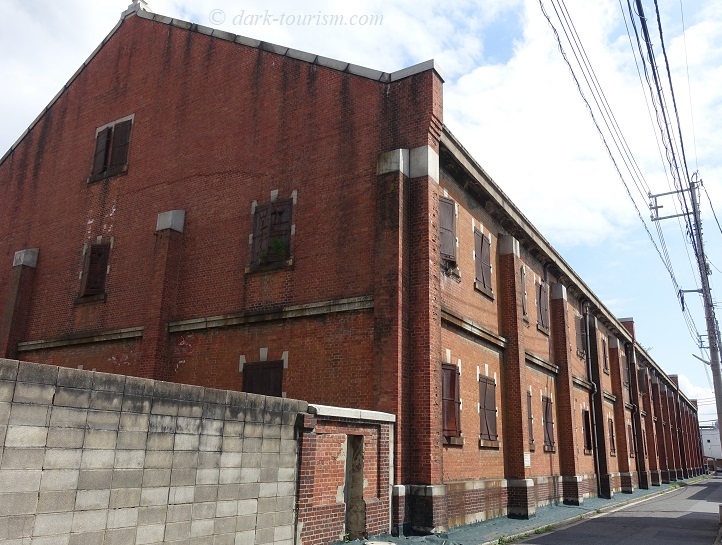
Three days after the bombing of Hiroshima, a second atomic bomb was dropped on Nagasaki (and so far remains the last time such a weapon of mass destruction was actually used). This city also has a museum about the bombing and two associated parks, one being the Hypocentre Park, seen in the next photo – the concentric circles set into the ground around the central memorial stone symbolize the shock wave of the blast:

The next photo shows one of the many, many memorial monuments in this area, and I found this one perhaps the most striking – two figures “flying” diagonally away from the blast, as it were:
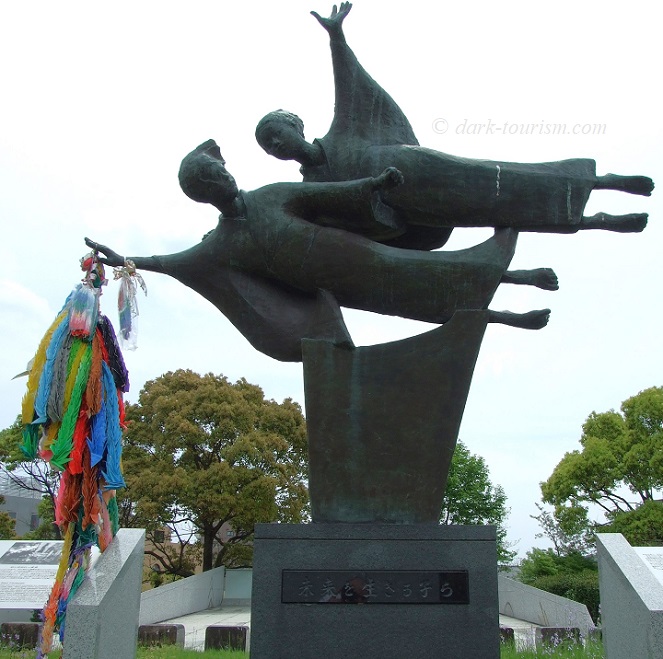
The Atomic Bomb Museum in Nagasaki is also very good (in some respects I found it even more impressive than its better known counterpart in Hiroshima). Here’s an exhibit that echoes the wristwatch in the photo above, here it’s a wall clock stopped at the time of the detonation on 9 August 1945:
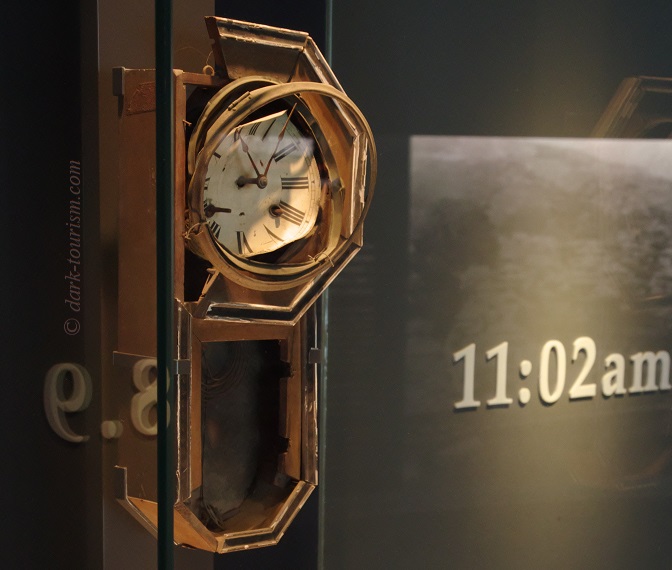
Another part of the exhibition is a replica of the “Fat Man” bomb that was dropped on Nagasaki:
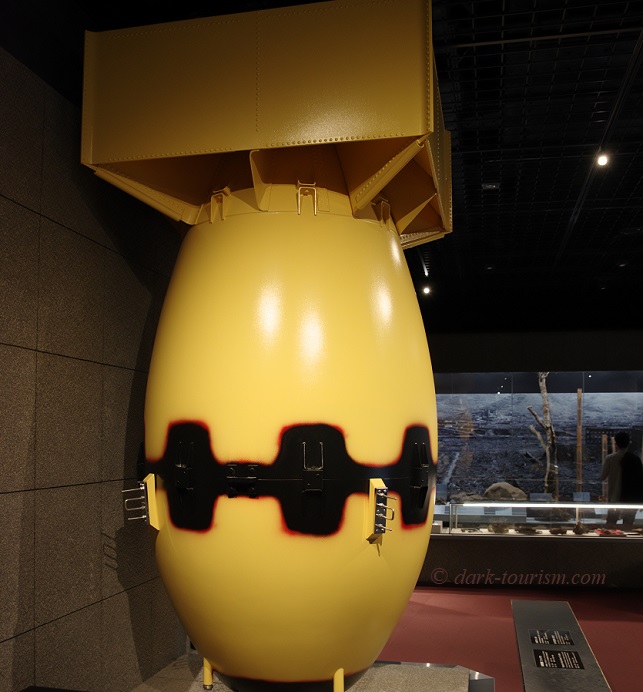
The force of the blast is exemplified by a large number of exhibits, including this life-size bent steel tower:

Possibly the most gruesome exhibit in the museum is this helmet found near the hypocentre. It has fragments of the victim’s skull welded to the inside of the helmet:

As in Hiroshima, there are also numerous “secondary” sights related to the atomic bombing of Nagasaki. One of them is this “one-legged Torii gate”. More remarkable than its partial destruction is actually the fact that it remained standing on just the one leg.
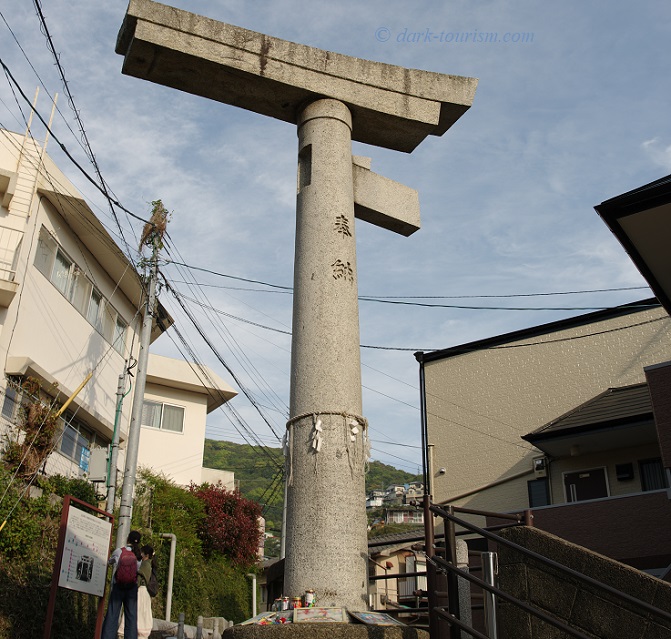
Standing on a hillside near the hypocentre, Urakami Cathedral was largely destroyed in the blast (btw. Nagasaki has long been a Christian enclave within Japan with many church buildings testifying to that to this day). The cathedral was rebuilt after WWII, but the top of the original belfry that was toppled in the blast was left where it had fallen to serve as an additional memorial monument.
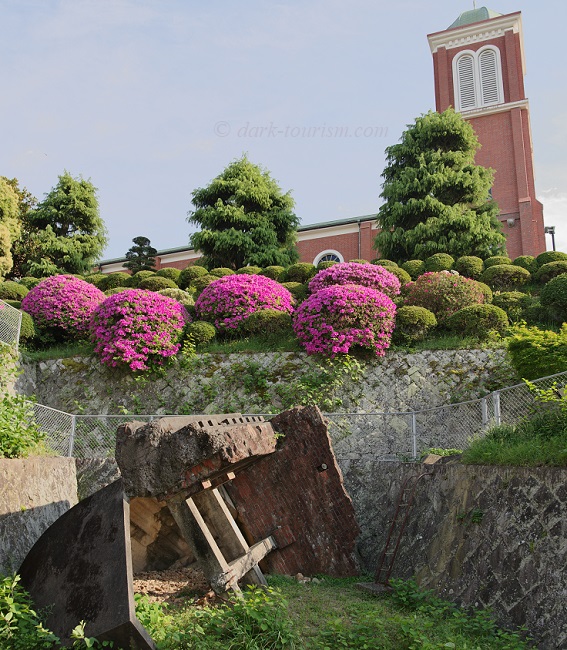
Finally, I was also privileged to be taken (by the guide from this small museum) to one of the least well-known sights of Nagasaki – a tunnel dug deep into the hillside on the outskirts of the city. During WWII this tunnel served as part of an underground facility for the production of torpedoes. After the atomic bombing of Nagasaki, many survivors sought refuge here:
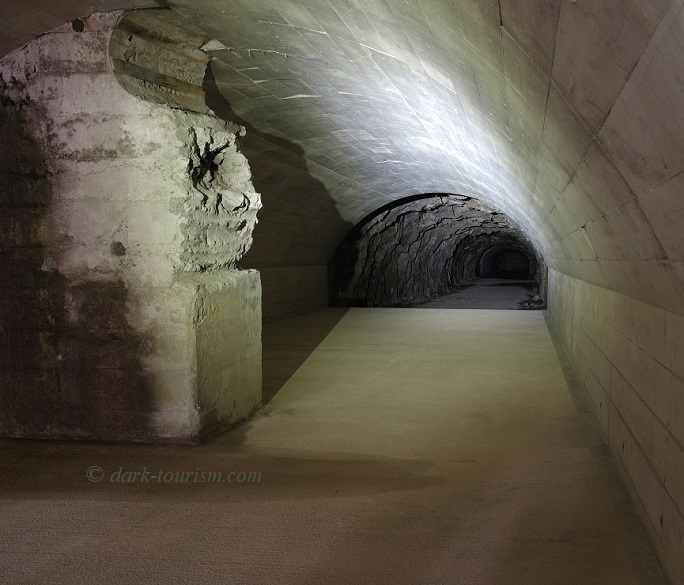
But with this I’ll come to a close.
May the recipients of this year’s Nobel Peace Prize be honoured – at least in the form of restraint from using another nuclear weapon. There are so many such weapons in the nuclear powers’ arsenals that it’s probably wishful thinking that one day they may all be abolished and the world would become nuclear-weapon-free again. But using such weapons beyond a means of deterrence, i.e. for real, could easily spell the end of the world. And that would be too tragic to contemplate …

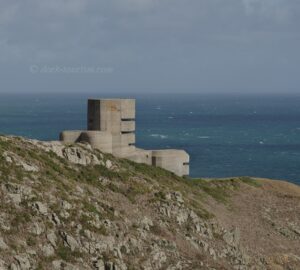
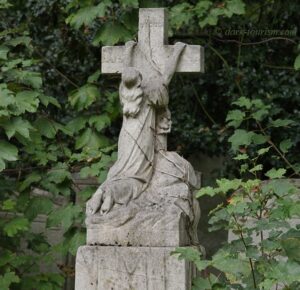

2 responses
Well it is not creative, but you get a very nice view overlooking the entire Hiroshima peace memorial park from the tower very close to the hypocentre. My photo from March 2024: https://i.imgur.com/qsBA5Lw.jpeg
thanks!
I saw the new tower (well, it hadn’t been there when I first visited n 2009) in 2019, but didn’t go up. Nice photo.